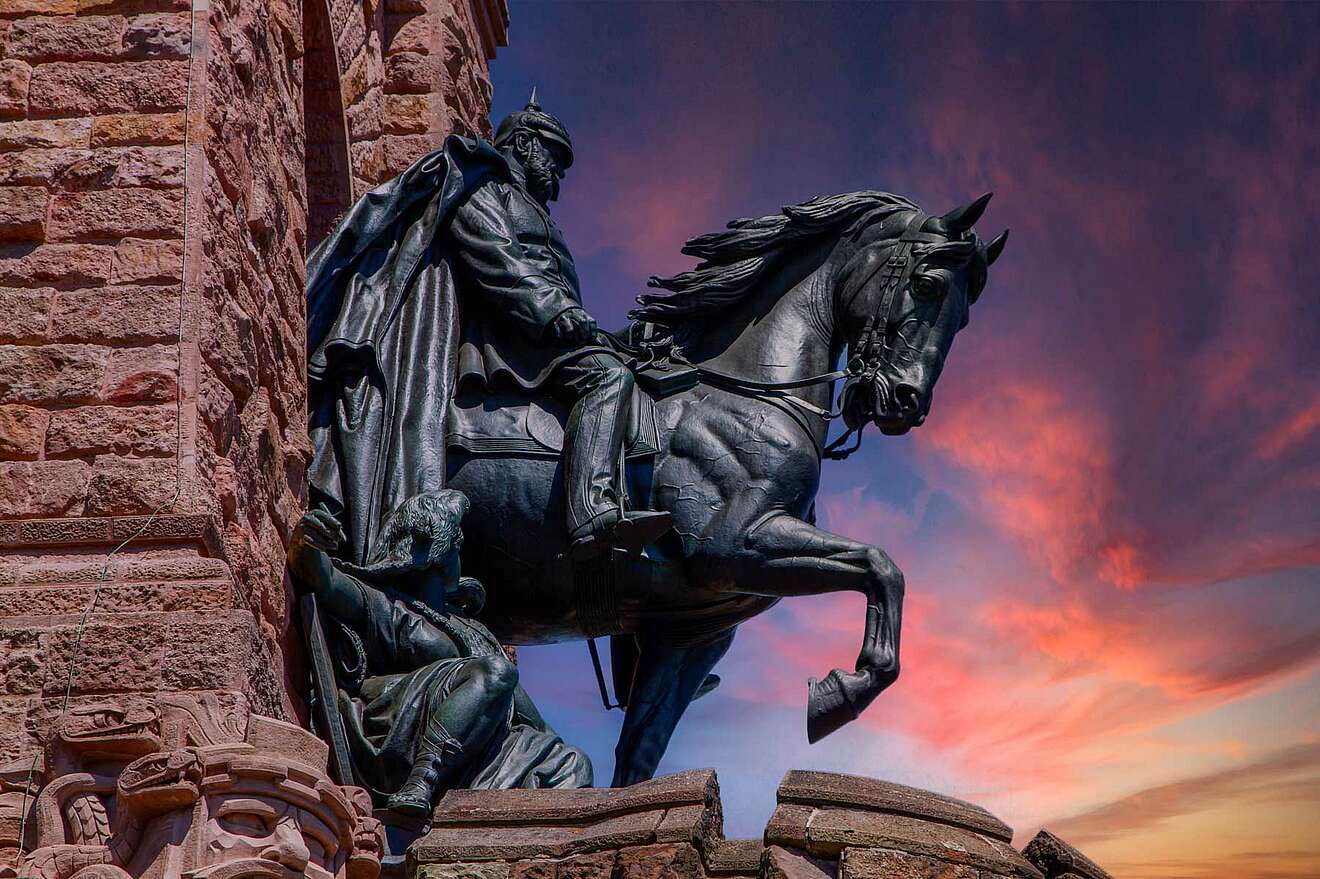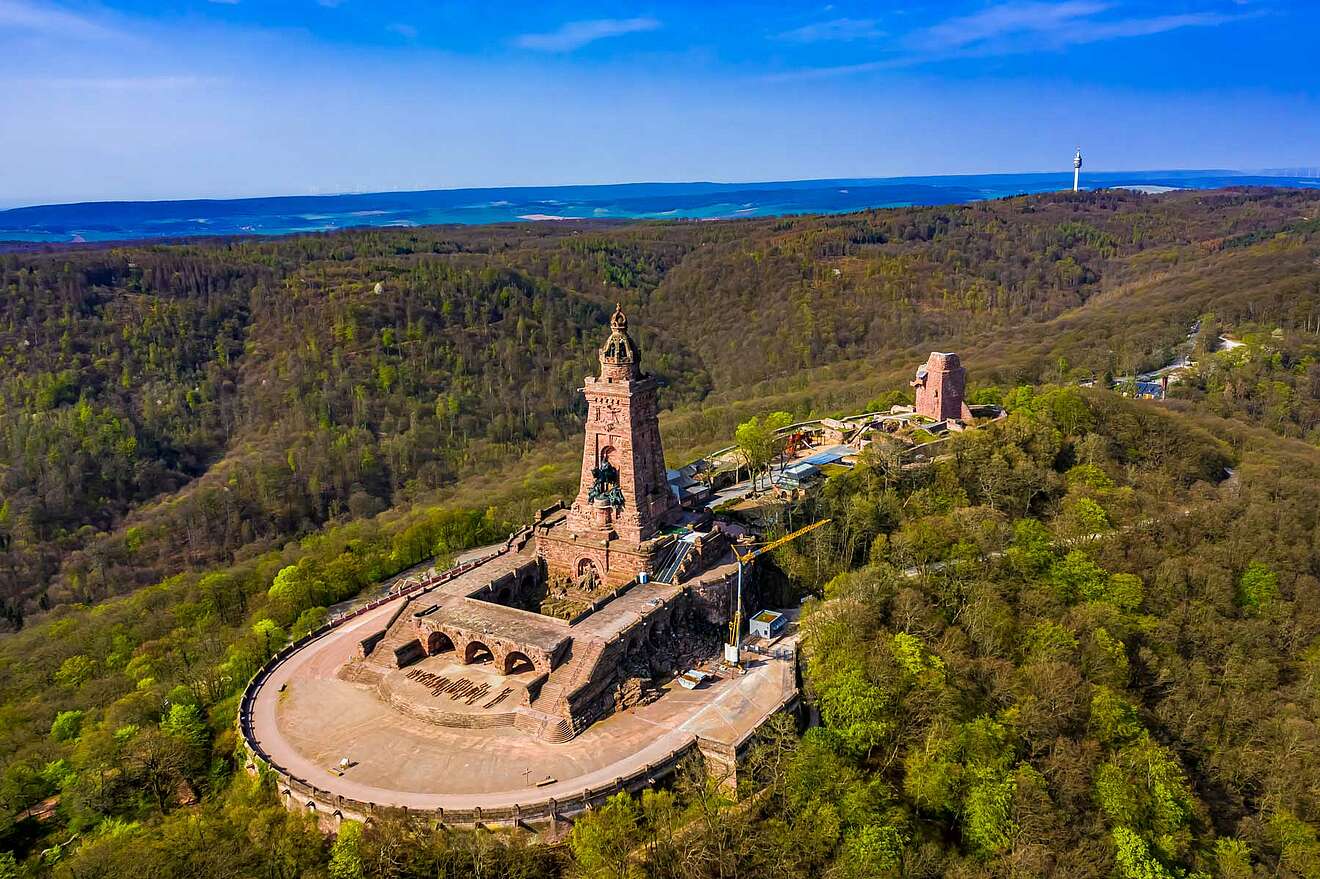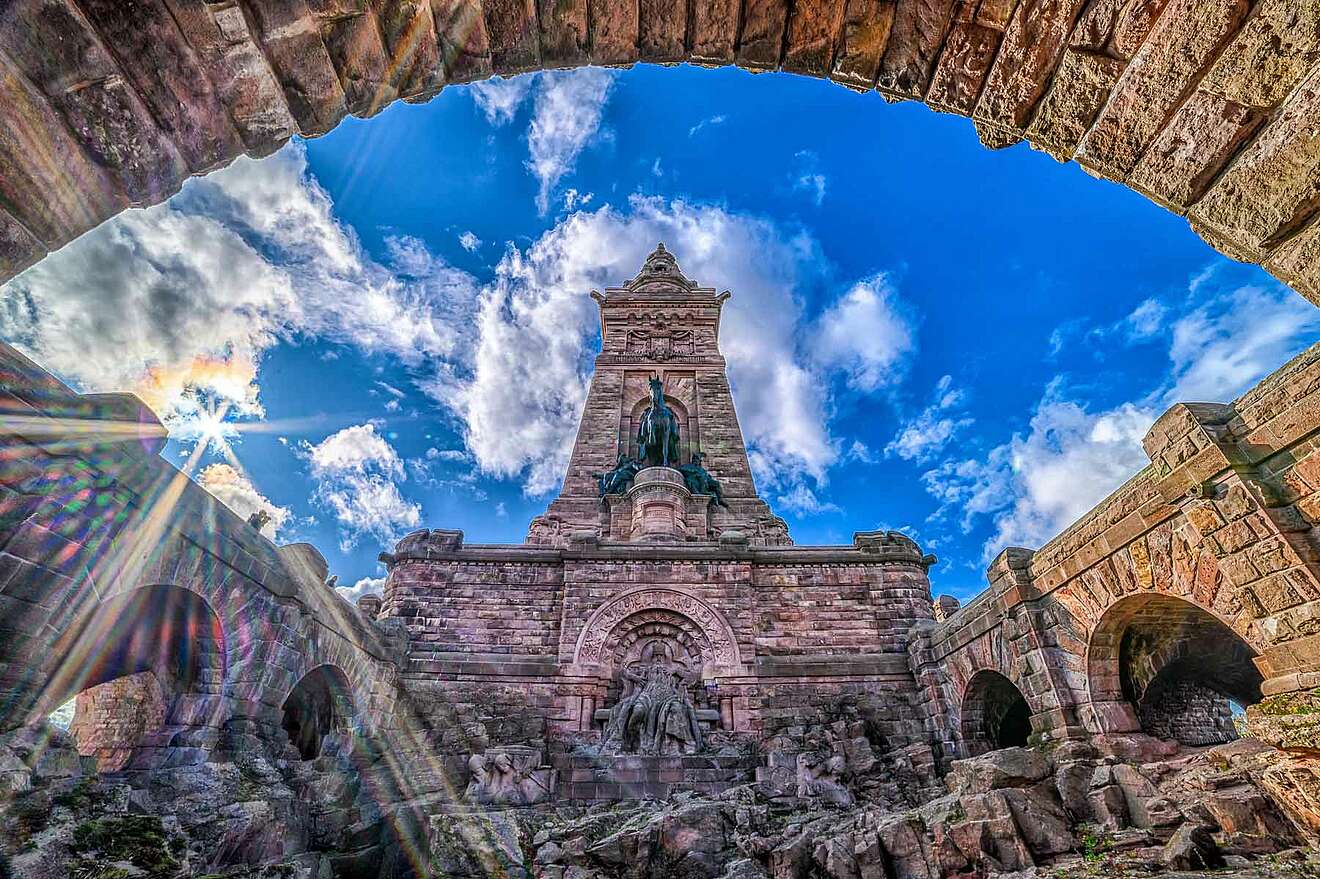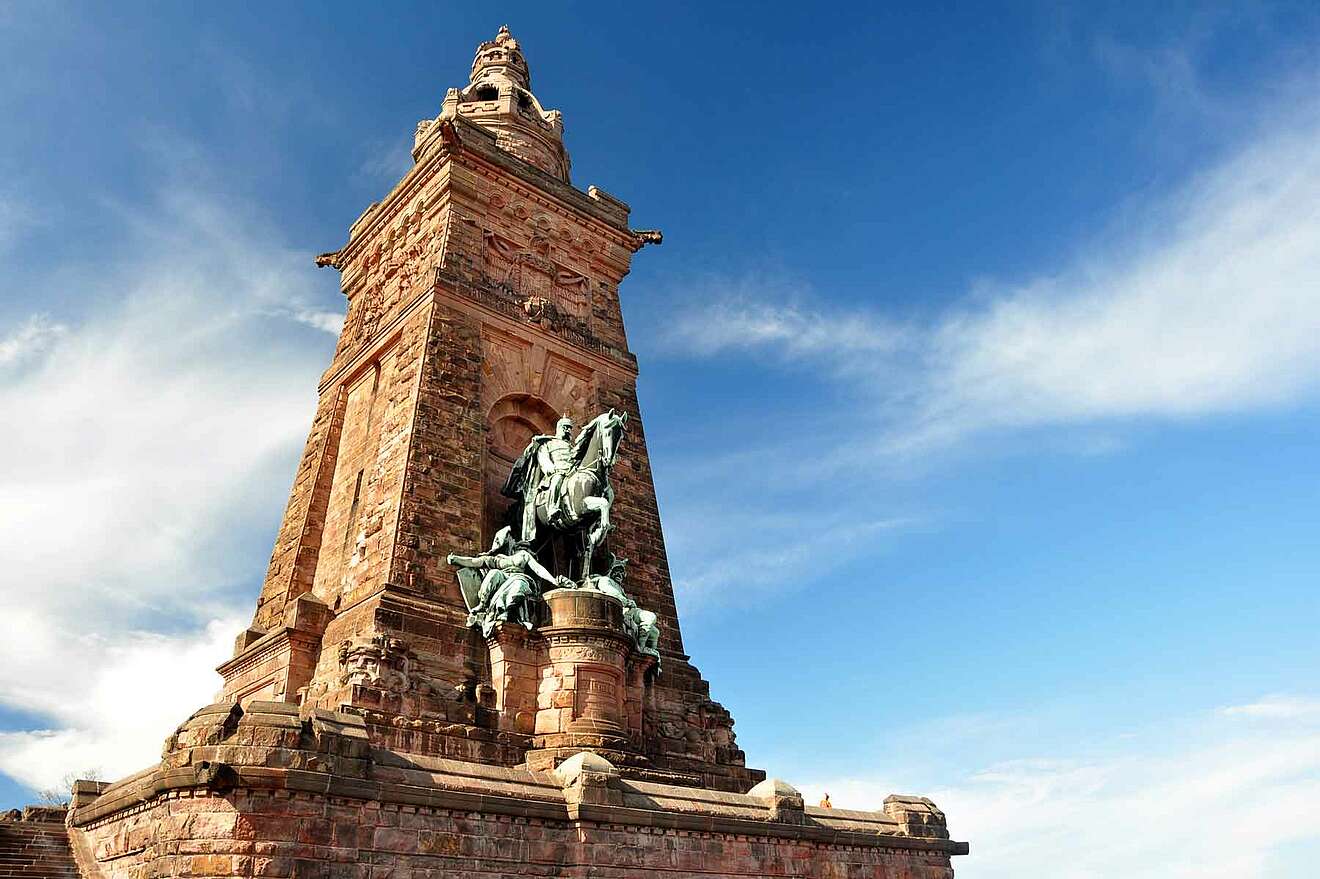

The Kyffhäuderdenkmal is the third largest memorial in Germany. The building rises 81 metres into the air. Only the Leipzig Battle of the Nations Monument and the Kaiser Wilhelm Monument in Porta Westfalica have larger dimensions. Like its counterpart in Porta Westfalica in East Westphalia, the Kyffhäuser Monument was erected in honour of Emperor Wilhelm I. It is located in the Kyffhäuser Valley. It is located in the Kyffhäuser Mountains, more precisely on the site of the former Imperial Castle of Kyffhausen. The area is located in the federal state of Thuringia and borders on the southern Harz region and Saxony-Anhalt.
Geographical location
If you want to pay a visit to the Kyffhäuser Monument, you have to go to the Kyffhäuser Nature Park. The monument is located about 350 metres south of the entrance area. It is 420 metres above sea level, almost as high as the adjacent Kyffhäuserburgberg. The nearest villages are Rathsfeld in the southwest and Bad Frankenhausen in the south. Sittendorf is to the north and Tilleda to the northeast. Both settlements belong to the town of Kelbra in Saxony-Anhalt, which is part of the scenic "Goldene Aue".
Bulwarks against democracy
The Kyffhäuser Monument, erected between 1892 and 1896, stands in a row with other buildings, all of which were built after the death of Kaiser Wilhelm I in 1888. They bow representatively to the monarch's services to the German Empire. In addition to the Kyffhäuser Monument, the following buildings bear witness to the veneration of Wilhelm I and his deeds in domestic and foreign policy:
- Hermann Monument (Detmold)
- Niederwald Monument (Rüdesheim)
- Monument to the Battle of the Nations (Leipzig)
- Kaiser Wilhelm Monument (Porta Westfalica)
- Valhalla (Donaustauf)

All of the monuments listed are classified as Wilhelminian. This is characterised by voluminous memorials that are more symbolic than concrete in character. In their metaphorical orientation, they oppose both external and internal enemies. Especially internal adversaries, in this case the sympathisers of German Social Democracy, were to be metaphorically declared war on with the help of the monuments. The towering bulwarks embody the Empire's defences against modern democratic forces rooted in the workers' movement committed to the proletarian idea.
Rehabilitation took 20 years
The Kyffhäuser Monument, also known as the Barbarossadenkmal, was realised according to the plans of the architect Bruno Schmitz. Schmitz followed the suggestions of the German warriors' association, which was the main supporter of the monument and still manages it today. The sandstone brought to the surface by a quarry served as the basic material for the builders. Since the material weathers over time, the Kyffhäuser monument was renovated between 1994 and 2014. The costs amounted to 14 million euros. Parallel to the renovation work, visitor numbers collapsed, so that the Kyffhäuser Tourist Association had to file for insolvency in 2013. The Kur & Tourismus GmbH Bad Frankenhausen stepped into the breach as the new operator.
Long-distance view beckons in the spire
From an architectural point of view, the Kyffhäuser Monument belongs to the Staufer period and the associated castle building. Similar to related buildings, the Kyffhäuser Monument in the Harz Mountains also has integrated figurative and pictorial elements. At the base of the monument, for example, there is a motif of Frederick I surmounted by a statue of William I. The top of the monument can be seen from the foot. The top of the monument can be climbed on foot. On a clear day, the view from the top of the tower is excellent.




